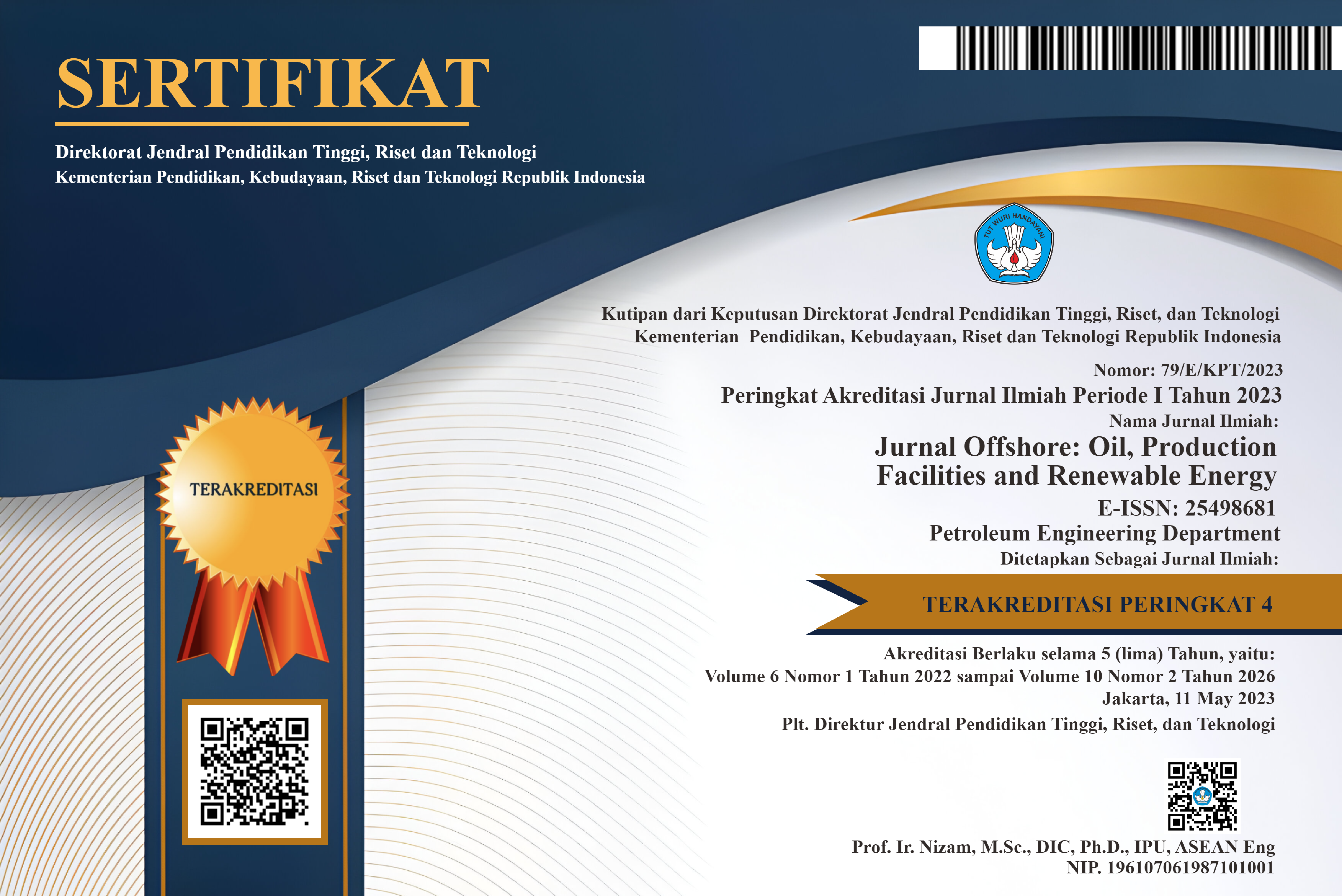PENGARUH PENAMBAHAN TINGGI WEIR PLTA SIPANSIHAPORAS UNIT #2 TERHADAP kWh PRODUKSI
DOI:
https://doi.org/10.30588/jo.v7i1.1568Keywords:
Debit-air, run-of-river, PLTAAbstract
PLTA Sipansihaporas Unit #2 (17 MW) merupakan sistem kaskade dari Unit #1 (35 MW) dengan tipe run of river. Berdasarkan pengamatan, inflow air pada Unit #2 ini tidak jarang melebihi volume kapasitas bendung/weir. Oleh karena itu, dalam usaha meningkatkan pasokan energi listrik, limpasan air tersebut berpotensi dapat menambah jam operasional Unit #2 dengan meningkatkan daya tampung bendung melalui peninggian bendung/weir. Penelitian ini dimulai dengan studi meja terhadap data curah hujan, data PLTA, dan data lainnya. Data curah hujan yang digunakan adalah dari stasiun Pinangsori. Perhitungan debit andalan (dependable discharge) yang diambil sebesar 85% dengan menggunakan metoda J. F. Mock. Disamping itu, dilakukan pemetaan topografi secara lagsung untuk mendapatkan kondisi area tampungan. Sedangkan untuk perencanaan penambahan tinggi weir diperoleh memalui perhitungan routing, dengan membandingkan aliran yang masuk dengan aliran keluar terhadap volume weir.Debit andalan yang diperoleh adalah sebesar 1.46 m3/det. Tinggi penambahan weir maksimun dapat dilakukan setinggi 5 m karena dibatasi oleh bentuk kontur area weir yang curam dan harus di bawah elevasi bangunan Power House Unit #1. Sehingga, didapatkan peningkatan waktu produksi menjadi 21,58 menit per hari, dengan lama pengisian waduk 10.28 jam.
References
C. Erdas, P. F. (2015). Ecological footprint analysis based awareness creation for energy efficiency and climate change mitigation measures enhancing the environmental management system of Limassol port. J. Clean. Prod.
Immerzeel, W. v. (2010). Climate change will affect the Asian water towers. Science.
Jihad. (2018). Prediksi Debit Andalan pada DAS Cisadane Hulu dengan Model Mock. Jurnal Ilmiah Desain & Konstruksi Vol.17 No.1.
Kesuma, R. P. (2013). Aplikasi Metode Mock, Nreca, Tank Model dan Rainrun Di Bendung Trani, Wonotoro, Sundangan dan Walikan. MATRIKS TEKNIK SIPIL. Vol. 1. No. 4. Hal 472 – 479.
Manzano-Agugliaro, F., & al, e. (2017). An overview of research and energy evolution for small hydropower in Europe. Renewable and Sustainable Energy Reviews.
Müller, M. F. (2016). Comparing statistical and process-based flow duration curve models in ungauged basins and changing rain regimes. Hydrology and Earth System Sciences .
Serpoush, B. K. (2017). Hydropower plant site spotting using geographic information system and a MATLAB based algorithm. Journal of Cleaner Production.
Z.K. Feng, W. N. (2018a). Optimization of large-scale hydropower system peak operation with hybrid dynamic programming and domain knowledge. J. Clean. Prod.
Zapata-Sierra, A. M.-A. (2019.). Proposed methodology for evaluation of small hydropower sustainability in a Mediterranean climate. J. Clean. 214, 717e729.
Downloads
Published
How to Cite
Issue
Section
License
Authors retain copyright and grant the Jurnal Offshore right of first publication with the work simultaneously licensed under a Creative Commons Attribution 4.0 International License that allows others to share (copy and redistribute the material in any medium or format) and adapt (remix, transform, and build upon the material) the work for any purpose, even commercially with an acknowledgement of the work's authorship and initial publication in Jurnal Offshore. Authors are able to enter into separate, additional contractual arrangements for the non-exclusive distribution of the journal's published version of the work (e.g., post it to an institutional repository or publish it in a book), with an acknowledgement of its initial publication in Jurnal Offshore. Authors are permitted and encouraged to post their work online (e.g., in institutional repositories or on their website) prior to and during the submission process, as it can lead to productive exchanges, as well as earlier and greater citation of published work (See The Effect of Open Access).















